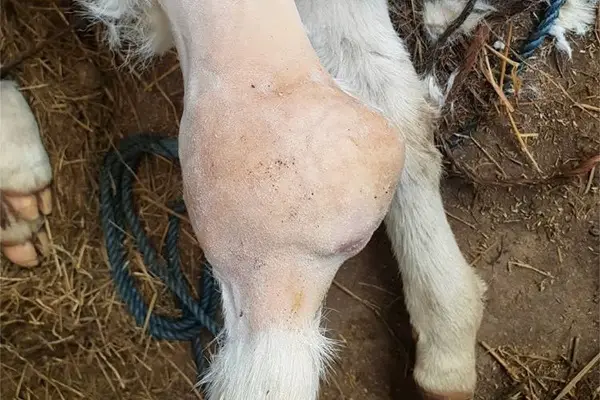Due to certain environmental conditions, it can be very plausible for new born calves to contract joint ill. Which can sometimes be very fatal foe a calve which happens to get infected by the disease. However recovery is possible and upon discovering that a new born calf has joint ill, you should respond immediately with the right amount of treatment to avoid any unwanted casualties. Without further adue, here’s what you need to know about recovery from joint ill in calves.
Contents
What Exactly Is Joint Ill?
Joint ill or navel ill is a bacterial infection that enters through the navel of calves immediately during or after it is born. The bacterial infection enters through the navel due to the fact that it will be the most vulnerable part of the calves’ body at that point. The bacteria then starts to travel through the body, making its way first to the joints (thus the name of the condition being called joint ill) via the young animal’s bloodstream. When the bacteria settles at the joints of the calves (the joints being parts of the calves’ body where two bones join, allowing that part of the body to have flexibility or bendability for movement.) The calves’ immune systems repond by thickening the joints, which is bad because the bacteria can then multiy some more as this would be a favorable environment for them to grow in. This then leads to more thickening or swelling and eventually inflammation of the affected joints.
- This (in mild and very serious cases) makes the calves immobile and unable to move around as usual.
How Do You Treat Joint Ill In Calves?
Joint ill is a very serious condition for the calves, however it can definitely be treated using conventional methods. The first thing to do when you notice that your calves have contracted joint ill (with the very first sign of the presence of the condition being an non-healing or always moist navel – The navel is the remaining bump in the abdomen of the calves when the umbilical cord has been severed) would be to get in touch with a veterinarian. The non-healing or undrying navel is a sure sign that bacteria have entered through that opening and are now making their way (most likely already have) through the bloodstream to other parts of the body.
Use Antibiotics Immediately
When you notice the symptoms of joint ill (which range from the moist navel, a long time after birth, to depression and sitting without any moving around.) You should use antibiotics immediately (provided you were not already using them after the calves’ births.) The most recommended antibiotic for calves is Penicillin. What this antibiotic drug does is that it destroys or inhibits the growth of bacteria and other harmful microorganisms that may be helping cause the joint ill. There are different types of bacteria that can cause joint ill in calves, so trying different kinds of antibiotics (if Penicillin is not working) is also advised.
- But always be sure to get a first or second opinion from a qualified veterinarian to avoid further complications.
Take The Calves In For Surgery
If the antibiotic treatment is not working and the joint ill infection is getting stronger then the next best step is to take the calves in for surgery. As a first resolve, this would mean the veterinarian will administer the antibiotics directly into the infected joints of the calves. Or in the instance that the condition is very dire, the calves would have to undergo surgery to directly remove the bacteria and then cut off the excess tissue build up from the swelling. When the bacteria have multiplied in a major way, they create a more suitable environment for themselves to thrive. This is when you will notice pale yellow-colored pus coming out of the joints when they are cut or pierced (it also happens to be the calves’ immune system defending them from the bacterial infection.) In which case all of that excess pus is a breeding ground for more bacteria and does not help the calves in any way. It needs to be surgically drained out immediately or the bacteria will continue to multiply, making their way to vital organs of the body of the calves like the brain, the heart and/or the liver. When the bacteria move to these parts of the body, it can mean death or paralysis for the calves. And if the calves are paralyzed, then they are of no use to you. You have to kill them in mercy.
Colostrum
This is the medical name for milk produced by the mammary glands of a cow after it gives birth. Colostrum is packed with nutrients and antibodies (proteins) that help in the growth and development of the calves. It is important in the case that your calves have been infected with the bacteria that cause joint ill that, in addition to the above treatments, you continue to give them colostrum from their mothers. This is the best and surest way to help the calves recover from joint ill even faster. However it shouldn’t be used as the only solution When dealing with something as dire for calves as joint ill.
Conclusion
In the case of recovery, the best thing to do is to treat the calves for the joint ill first. But it is always important to remember that prevention is better than treatment, therefore keep the pregnant cows in a cool and dry environment, especially when they’re about to give birth. You’re more likely to successfully cure the calves from the joint ill if you notice the symptoms of the infection earlier before anything else. When you notice the joint ill at a later stage, it is very likely that the calves will die or you will have to kill them because the bacterial infection would have spread so deeply into the bodies of the calves that they wouldn’t be able to recover from it.




